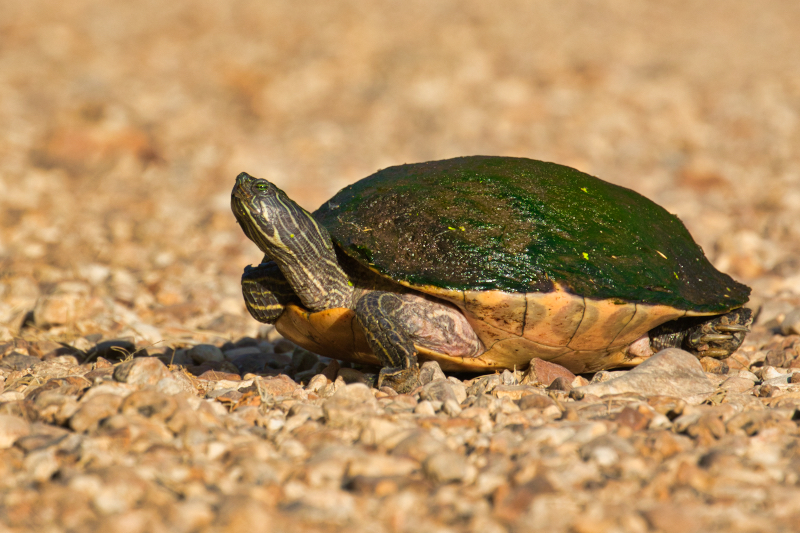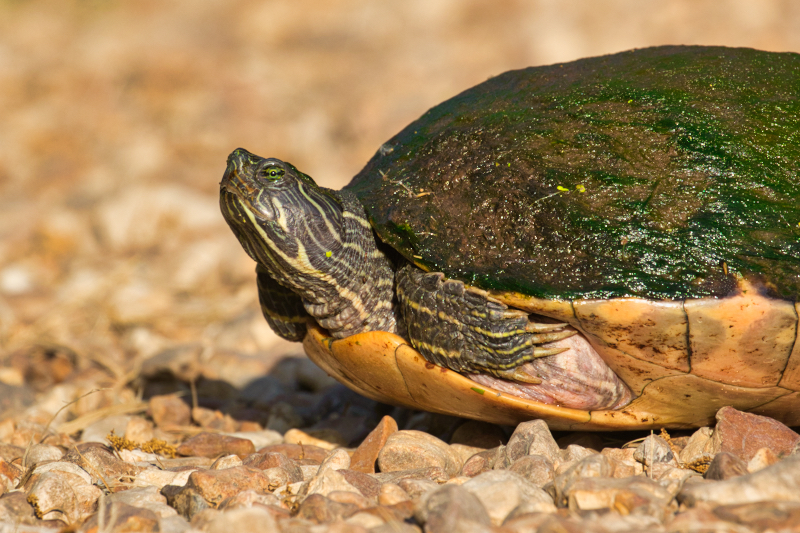Back in June 2018, I had the pleasure of photographing an Eastern River Cooter at the Sequoyah National Wildlife Refuge in Oklahoma. As luck would have it, I found this turtle crossing the auto tour road, which made for a great opportunity to get up close and personal with this species. It’s common for females to cross roads in search of suitable nesting sites.


To capture the shot, I parked my pickup truck a short distance away from the turtle and approached it on foot. As I got closer, the turtle stopped, allowing me to take a few photos. I used my Canon EOS 7D Mark II camera with a Canon EF 100-400mm f/4.5-5.6L IS II lens, shooting in aperture priority mode (AV) with a fast shutter speed of 1/2000 of a second at f/7.1, and an ISO setting of 500. I had the white balance set on auto, and used single-point continuous autofocus with evaluative metering.
Here are some interesting facts about the Eastern River Cooter:
- They prefer living in places with flowing water, such as rivers, but can also be found in other freshwater habitats.
- Their diet consists mostly of aquatic plants, which make up about 95% of what they eat.
- If you try to approach them, they will quickly retreat into the water.
- They are able to breathe underwater through a sac in their tail, which allows them to stay underwater for extended periods of time.
- Nesting typically occurs between May and June, and females will lay between 10 and 25 eggs. The eggs hatch within 45 to 56 days.
- Adult Eastern River Cooters can grow up to 15 inches in length, and females are typically larger than males.
